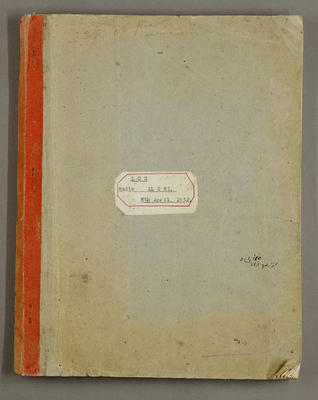Amateur Radio Operations Aid the 1933 Tasman Crossing by the Southern Cross
Radio communications
Radio communications were essential to the success of early aviation for reporting on visibility and the changing weather conditions experienced by crew flying at a lower altitude.
Amateur radio operator Leslie Earnest Birch (1896–1978) was a key member in the communications between New Plymouth’s Bell Block Aerodrome and the aircraft, lending his 100 watt transmitter to the New Plymouth Aero Club for this flight.
At the start of the flight, messages were relayed from the plane to Sydney’s Zero Beat Radio Club operating from the take-off location — Gerringong Beach. As the plane got closer to New Zealand, this process was reversed, and messages were sent to the aircraft from the New Plymouth Station via help from a radio station in Wellington.
Help from the Wellington station was necessary as the plane’s radio equipment was unable to receive short-wave messages owing to electrical interception by the aircraft’s engines. Southern Cross radio operator, John Stannage, wrote to Birch “we have found that the mags. and plugs hurl out such terrific induction that SW [short-wave] reception is literally impossible.” (04/001/065).
Flight success
The flight across the Tasman took a total of 14 hours and 15 minutes, taking off at 4.45am and landing at 7.00pm NZT. Very different to the 2.5 to 3 hours we experience today!
A series of handwritten notes by radio operators record various aspects of the flight, including the plans in the days leading up to the journey:
“Plane has been up yesterday / tests with radio gear satisfactory…”
“Flood lights not necessary stop / Smithy has big light on plane / Get search light though…”
“Advise plane / searchlight on mountain side of hangar…”
“Way off as we expected to be off our course / correct have set course for Egmont / expect to arrive 4.30pm AS time (6/30pm) / will confirm this later / KS / Please let wives know”
“Excellent full moon / no wind…”
Public Reception
Radio operators also helped generate public interest in the flight by relaying the progress which was broadcast to local listeners on New Plymouth’s station 2YB. A crowd gathered to meet “the Old Bus” at the aerodrome where loud speakers were said to be set up to keep the crowd informed of the plane’s progress.
Radio operators played a crucial role in the development of aviation, helping relay important messages to crew to assist with their safe arrival. Leslie Birch went on to have a lifelong interest and career in radio. Read on below to find out more about his ham radio operations, or explore more of the collection here.
Leslie Birch: ham radio operator
Leslie Birch obtained an operator’s license in 1926 and began transmitting from New Plymouth in the late 1920s with the station call sign ZL2Hi. Birch gained further formal qualifications in 1939 and continued correspondence study throughout the 1940s, compiling lesson papers from Wellington’s Johnson’s Wireless College. Birch communicated with radio stations all around the world, collecting calling cards everywhere from Spain to the United States.
Birch also served on the Radio Emergency Corps, an umbrella unit of the New Zealand Association of Radio Transmitters, set up after the 1931 Napier earthquake for emergency management. Birch later became a government Radio Inspector for Post and Telegraph Department in Dunedin (1944).
MOTAT hold his radio logs from critical periods; letters from Southern Cross radio operator John Stannage and amateur radio operators; station equipment photographs; and other memorabilia of radio operation in the 1920s and 1930s.


![[To Leslie Birch regarding radio contact for forthcoming Southern Cross TransTasman flight]; John Stanley Warburton Stannage; 20 Dec 1932](https://collection.motat.nz/records/images/medium/21711/8b571eeddd7f7a320bfb58f64b70c268e903be1f.jpg)

![[Map illustrating the flight of the monoplane "Southern Cross" VMZAB from Sydney to New Plymouth]; Unknown; 1933](https://collection.motat.nz/records/images/medium/21742/9faaeba9381b519e3730379817bb0860c520497f.jpg)

![[Ham radio station call sign cards to and from ZL2HI]; Leslie Ernest Birch; [1930s]](https://collection.motat.nz/records/images/medium/21745/0ebac7b6d81bbe78ccf8e069ad37cb5506d05631.jpg)